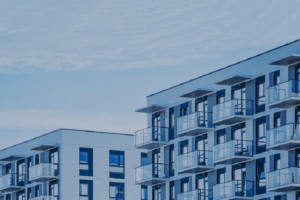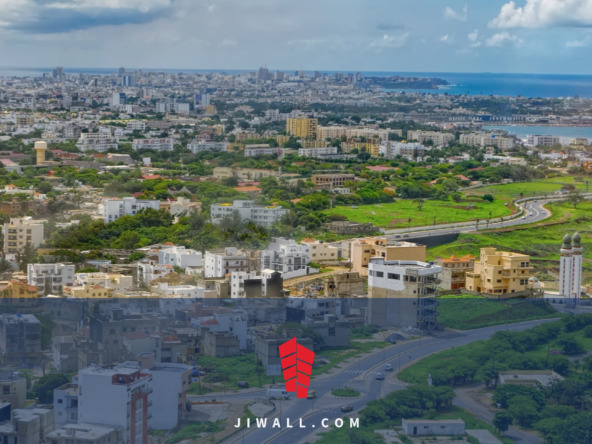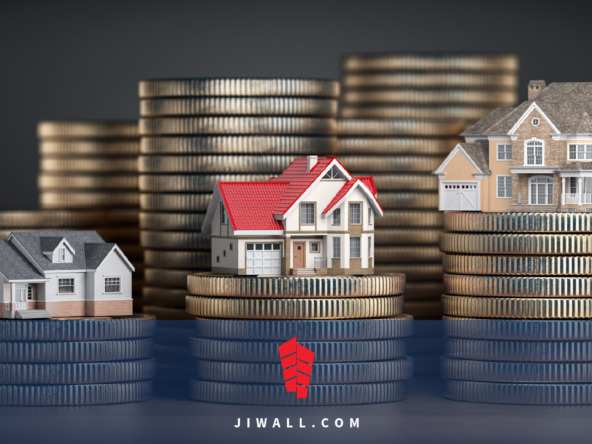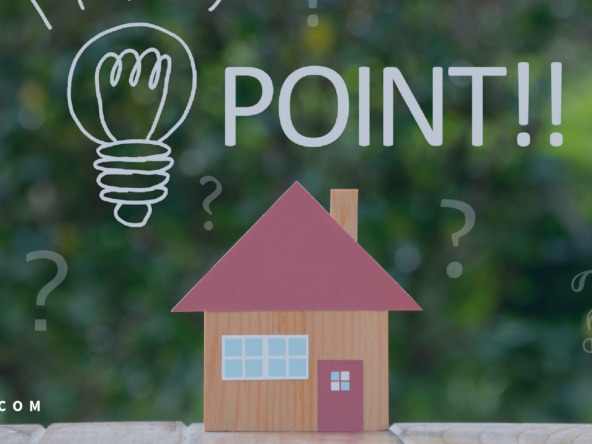Real estate in Dakar is one of the most dynamic economic sectors in Senegal, and is experiencing very strong growth. According to the National Agency for Statistics and Demography (ANSD), the price per square meter has, on average, multiplied by 2.5 between 1994 and 2000, then by more than 2 between 2000 and 2009. At the same time , construction costs have moved in the same direction. For example, the average cost of building a low-rise house rose from 9.9 million CFA francs in the 1990s to 14.3 million CFA francs between 2000 and 2010, an increase of 44.4% . The rise in house prices is such that many experts have been talking about a potential real estate bubble in Dakar since 2005. Fifteen years later, prices continue to climb without any sign of slowing down.
After analysis, we are convinced that there is no real estate bubble in Dakar. But before presenting you the arguments corroborating the non-existence of this bubble, it is important to define it well.
Table des matières
What is a bubble ?
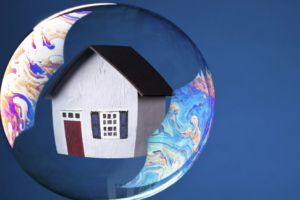
A financial bubble is an excessive and artificial rise in the prices of an asset or a group of assets that have a low correlation with the growth of the economy and the purchasing power of the inhabitants.
We speak of a real estate bubble, when the rise feeds on itself and the initial rise in real estate assets attracts new investors / speculators who anticipate future increases and invest in order to achieve a financial transaction. As a result, the level of exchange prices is much higher than the fundamental financial value of the traded goods.
Reading the definition, at first glance, it is easy to associate the characteristics of a real estate bubble with the attributes of the Dakar real estate market. In fact, the growth of the purchasing power of Dakar residents is not as fast as that of property prices. However, what about the fundamental financial value of this real estate? Is it possible that the rise in prices, despite the fact that it is not correlated with the purchasing power of the inhabitants, is not artificial?
It would be difficult to express in a concise manner a diagnosis of Dakar real estate in general, knowing that its different sub-sectors may be at different stages of their life cycle. Consequently, we will limit our analysis to residential real estate in Dakar.
What are the elements that determine the fundamental value of a land ?
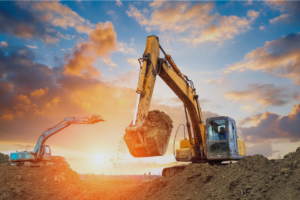
The financial value of land is calculated on the basis of 6 fundamental criteria:
Supply and demand ;
The possibilities of developing a plot ;
Proximity to economic activities;
Accessibility;
The development and infrastructure of the district ;
The physical attributes of the terrain.
Let’s explore the evolution of these factors in Dakar and their impact on land tenure in Dakar.
DEMAND WIDELY HIGHER THAN THE OFFER
Real estate is no exception to this fundamental notion of macroeconomics. According to the Ministry of Town Planning, Housing and Public Hygiene (MULHP), there is currently a deficit of over 300,000 housing units which is growing by around 10% each year. This, combined with the fact that the public and private sectors combined have only been able to market around 4,000 homes per year in recent years, demonstrates the importance of exploring the elements that contribute to widening the gap. between supply and demand. These elements are discussed below.
What explains this over-demand for real estate in Dakar?
Demographic pressure
Housing being a primary need coveted by all, demographic changes are positively correlated with demand for land. Dakar hosts 24% of the population of Senegal on an area representing 0.3% of that of the country. According to ANSD, this population will be around 4,500,000 in 2025. This strong demographic growth is caused by a strong rural exodus and immigration of nationals from the sub-region.
Dakar, the only true urban center in Senegal, captures the majority of economic activities
According to the World Bank, Dakar is the source of 55% of the national GDP and concentrates more than 52% of the jobs created in the country. The capital alone contains 80% of the country’s economic activities, which exacerbates the rural exodus. It therefore faces an exponential real estate demand for buildings for residential, commercial or industrial use. As mentioned above, proximity to economic activities is one of the determining factors in the price of real estate. It is in this sense that the failure of the decentralization policies of our governments increases the price of land in Dakar.
Uncontrolled urbanization makes intramural Dakar more attractive
Added to this is a limited capacity for urban planning. According to the World Bank, less than 20% of cities and municipalities in Senegal have an urban plan, in which case, a majority of these plans are obsolete or are not applied due to insufficient resources in local communities. Still according to the World Bank, in 2004, 35% of the space occupied in Dakar was made up of irregular and non-developed neighborhoods. This explains why there is an exponential demand in the districts created at the start of independence. So let’s not be surprised, that in a few years, the price per m2 in well-off and sanitized neighborhoods such as SICAP is approaching 800,000 CFA francs or even 1,000,000 CFA francs
Political stability attracts investors from the sub-region
Senegal is renowned for its political stability and is regarded as an example in the sub-region. It is a natural destination for investors in the area wishing to further secure their assets. This exogenous demand is not reflected in Senegalese demographic statistics and is likely to increase given the prospects opened up for Senegal as a future oil country.
These are all factors that increase demand and put pressure on house prices. Thus, before a bubble can form and then burst, this demand would first have to collapse suddenly (through a political crisis or an economic crisis, for example) or that a particularly substantial supply floods the market. . This prompts the following question:
Why does the supply not follow to bring the market back to equilibrium?

An embryonic financial market
The Senegalese financial market is in an embryonic state and does not allow the development of a viable real estate sector. Banks are almost the only source of financing for real estate developers and according to the “Center for Affordable Housing Finance in Africa”, 80% of bank loan requests by VSEs and SMEs are refused for lack of collateral. In addition, Senegal ranks among the bottom African countries in terms of mortgage loan amounts per unit of GDP – 0.07% of GDP in 2013 – far behind Kenya (3.45%), Uganda (0.90%), Nigeria (0.58%) or even Ghana (0.45%) (CAHF 2014).
Rare secure land
The scarcity of land is not only due to the fact that Dakar is a peninsula. Equally important is the legal nature of the land available. According to the National Land Reform Commission (CNRF), 95% of land belongs to the national domain, the remaining 5% is shared between the state and private third parties and only 152,000 land titles are issued for the 15 million Senegalese. The scarcity of security titles limits the land on which real estate transactions can be carried out, given that only land titles and leases are accepted by banks as collateral.
Non-incentive taxation
Property taxation is another brake on the increase in supply from real estate developers. The cost of imported building materials that is bid on due to taxes and customs duties directly impacts the prices of the real estate offered. Once the property is built, there are registration fees which can amount to almost 11% of the amount of the transaction and which represent a significant obstacle to access to housing by acquisition. These fiscal implications therefore leave the door open to self-construction, which according to the World Bank represents more than 80% of the production of urban housing in Senegal.
THE ADOPTION OF THE CO-OWNERSHIP, A CATALYST OF THE PRICE FLOOD
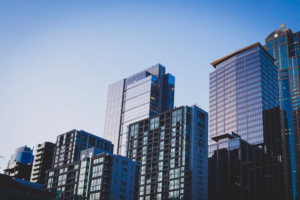
Supply and demand are not the only reason for the rapid rise in real estate prices in Dakar. As mentioned above, the value of land also depends on the development possibilities that it offers. Land on which a 10-storey building can be erected will be more valuable than land on which there is an urban planning constraint that limits its height to 2 floors.
A very important socio-economic factor has very often been overlooked by experts arguing for a real estate bubble in Dakar. Until very recently, the acquisition of a condominium property, an apartment more specifically, was not common in Dakar. As soon as Dakar residents are comfortable with the prospect of living in an apartment, the possibility of vertical elevation increases the yield potential of a piece of land and therefore, quite naturally, increases the price of that land. The high-rise construction and the adoption of condominiums in Senegal unleashed the development potential of land in Dakar.
The real estate developer who plans to make a profit by building a building is willing to pay more for land compared to someone who wants to build a house on it. The bidding becomes the order of the day. In addition, landowners in the area align their price with the last sale indirectly forcing the next buyer to build in height in order to be able to amortize the cost of land. A vicious or virtuous circle is thus created, depending on the angle of analysis.
As in all the big cities of the world, it will soon be inconceivable to buy land in intramural Dakar and then build a house there. The only option available to the new generation will be to buy an apartment. Dakar is about to take an important step in its process of asserting itself as an urban metropolis and it is important to recognize this.
In conclusion
It is clear that the prices of real estate are experiencing dizzying growth and that speculation on the part of some is accentuating this rise. Nevertheless, Dakar residents, in the majority of cases, buy either for housing or to invest with a long-term perspective, without actually being part of a financial operation logic. In addition, the growing gap between supply and demand is far too large in Dakar for a real estate bubble to establish. There are no signs that we can expect this gap to narrow quickly. Added to this is the fact that the development potential of land in Dakar has been multiplied by the adoption of condominiums by Dakar residents, which will continue to support the price of land in the region. All these elements are so many arguments that discredit the thesis of a real estate bubble in Dakar. In other words, if you want to invest in real estate in Dakar, it is now and not in a hypothetical future where the bursting of a real estate bubble would bring prices down to levels more sensitive to your tastes.
Par Pape Makhtar DIOP




